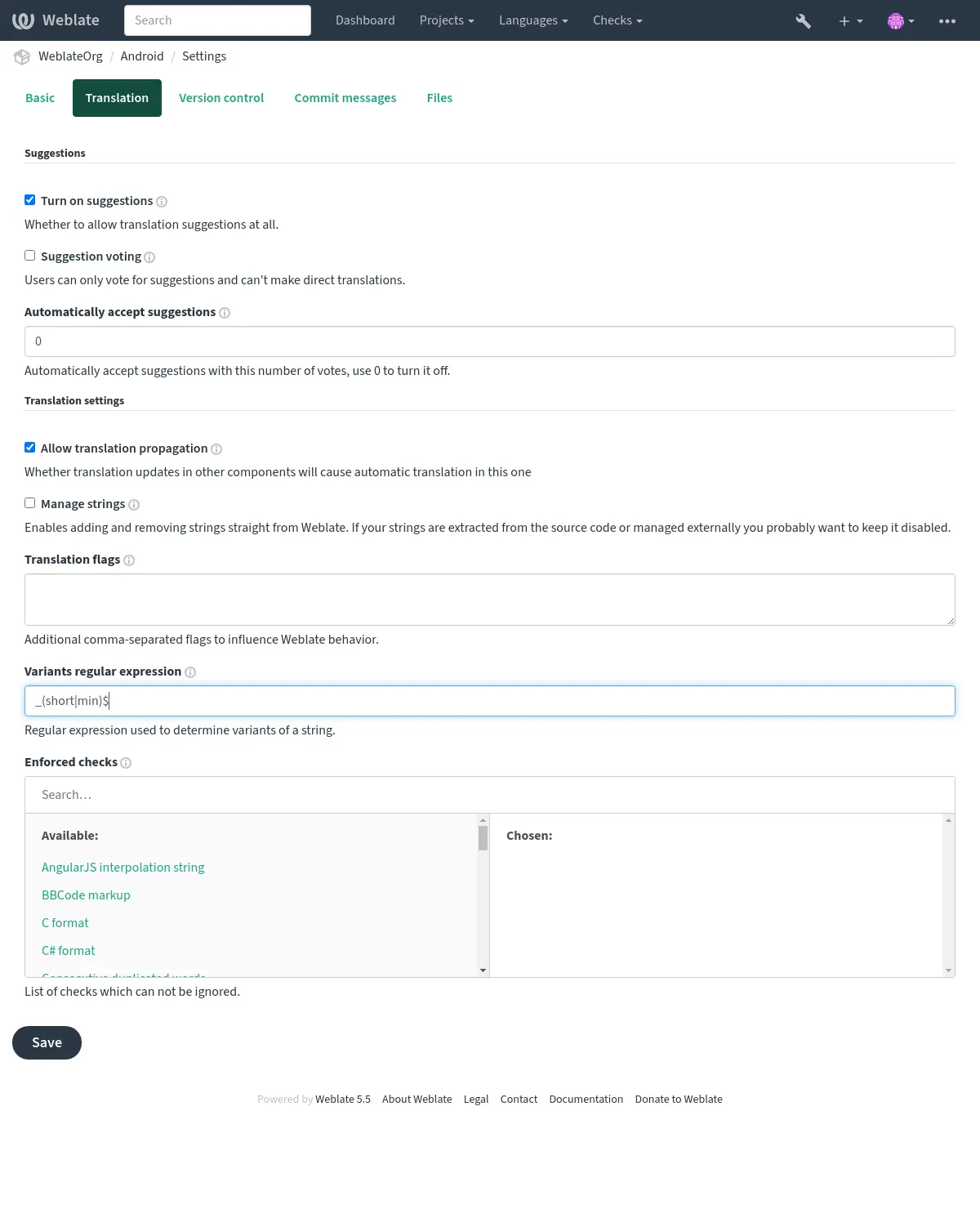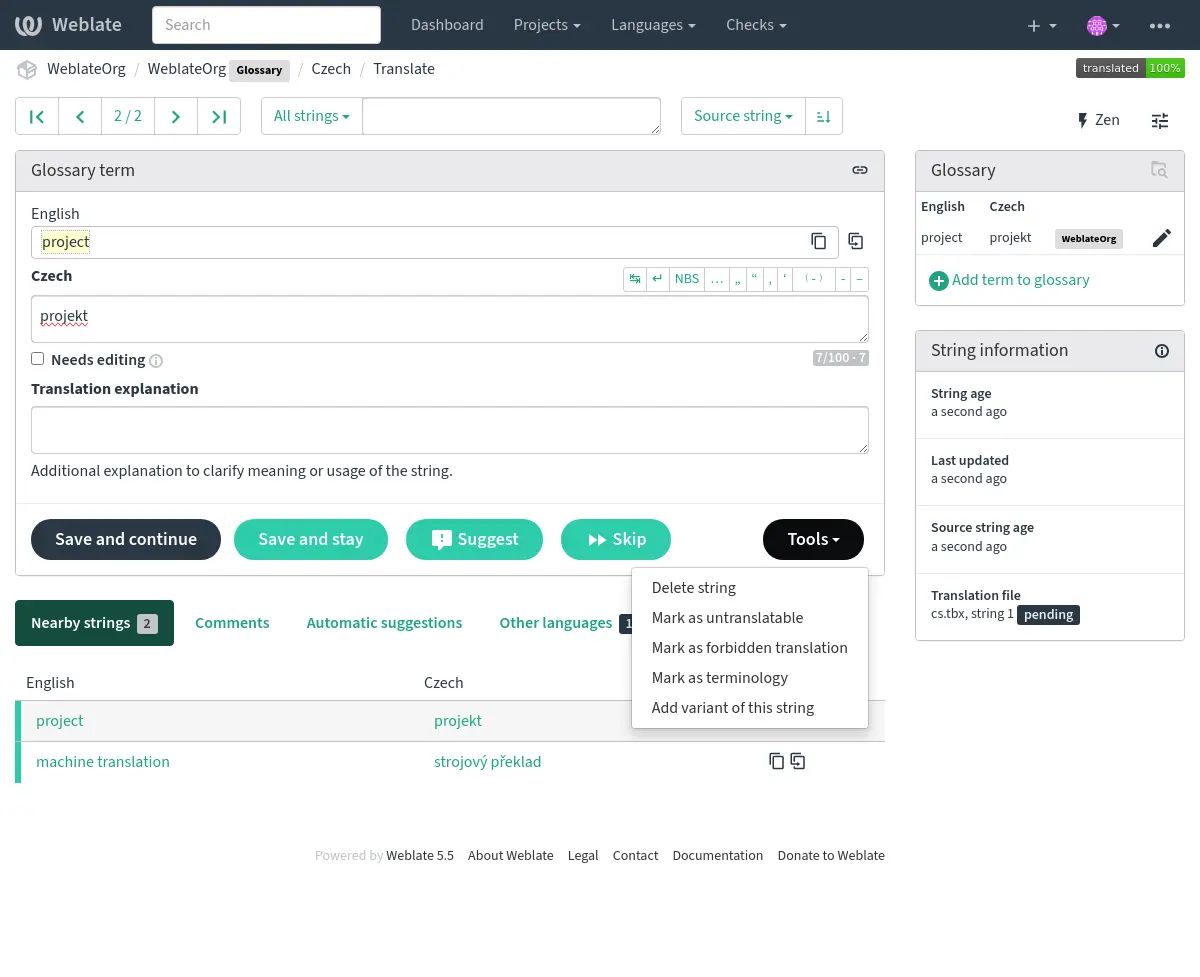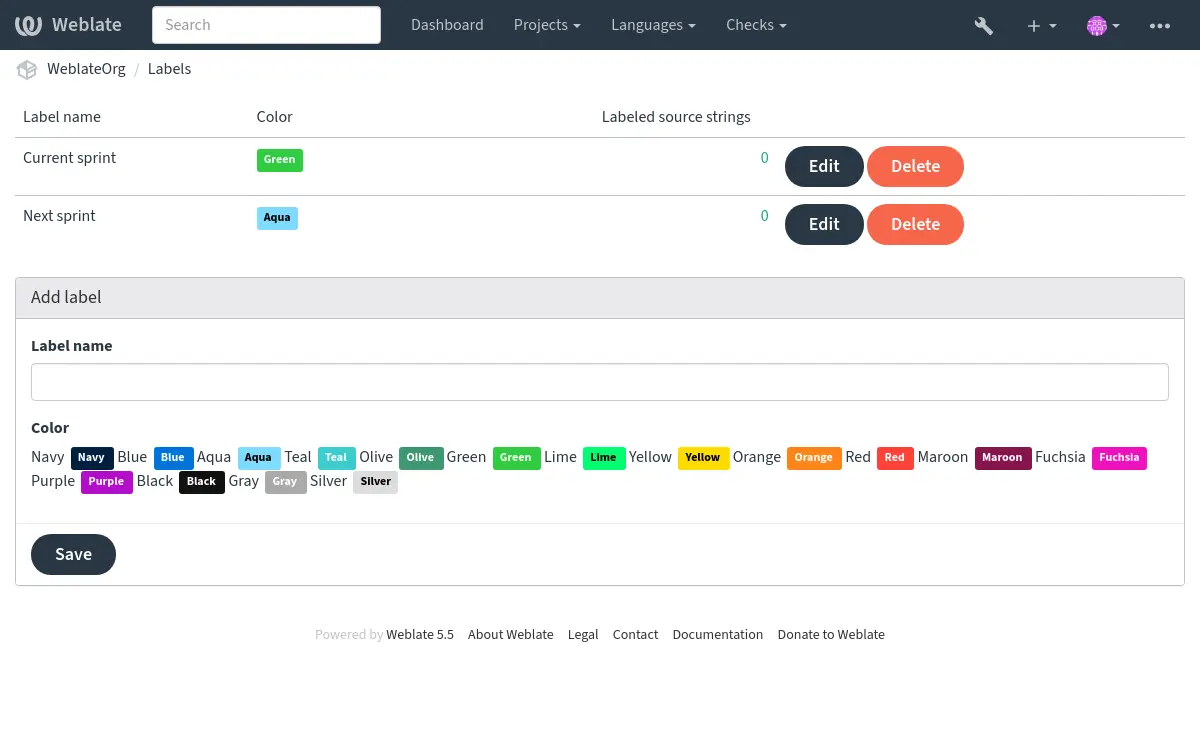Gestionar traducciones¶
Añadir cadenas nuevas¶
New strings can be made available for translation when they appear in the base file, called Plantilla para traducciones nuevas (see Configuración de componentes). If your file format doesn’t require such a file, as is the case with most monolingual translation flows, you can start with empty files.
Añadir traducciones nuevas¶
New languages can be added right away when requested by a user in Weblate, or a notification will be sent to project admins for approval and manual addition. This can be done using Adición de traducciones nuevas in Configuración de componentes.
Some formats expect to start with an empty file and only translated strings to be included (for example Recursos de cadenas de Android), while others expect to have all keys present (for example GNU gettext PO (Portable Object)). The document-based formats (for example Formato OpenDocument) start with a copy of the source document and all strings marked as needing editing. In some situations this really doesn’t depend on the format, but rather on the framework you use to handle the translation (for example with Archivos JSON).
When you specify Plantilla para traducciones nuevas in Configuración de componentes, Weblate uses this file to start new translations. Any existing translations is removed from the file when doing so.
When Plantilla para traducciones nuevas is empty and the file format supports it, an empty file is created where new strings are added once they are translated.
The Estilo de código de idioma allows you to customize language code used in generated filenames. Additionally, any mappings defined in Alias de idiomas are applied in reverse.
Ver también
Adición de traducciones nuevas, Plantilla para traducciones nuevas, Estilo de código de idioma, Código de idioma, Alias de idiomas, Procesamiento de códigos de idioma
Nota
If you add a language file in connected remote repository, respective translation is added to the component when Weblate updates local repository.
More info on the repository update settings can be found on the Updating repositories.
Eliminar traducciones existentes¶
Languages, components, or the projects they are in, can be removed (deleted from Weblate and remote repository if used) from the menu Manage ↓ Removal of each project, component, or language.
Initiating the Removal action shows the list of components to be removed. You have to enter the object’s slug to confirm the removal. The slug is the project’s, language’s, or component’s pathname as it can be seen in the URL.
If you want to remove just some specific strings, there are following ways:
Manually in the source file. They will be removed from the translation project as well upon Weblate’s repository update.
Added in version 4.5.
In Weblate’s UI via button Tools ↓ Remove while editing the string. This has differences between file formats, see: Gestionar cadenas
Nota
If you delete a language file in connected remote repository, respective translation will be removed from the component when Weblate updates local repository.
More info on the repository update settings can be found on the Updating repositories.
Variantes de cadenas¶
Las variantes son útiles porque agrupan varias cadenas relacionadas de forma tal que los traductores las puedan ver todas en un solo sitio.
Consejo
Abbreviations (shortened forms, contractions) are a good example of variants.
Variantes automatizadas basadas en la clave¶
You can define regular expression to group the strings based on the key of monolingual translations in the Configuración de componentes:

In case the Key matches the expression, the matching part is removed to generate root key of the variant. Then all the strings with the same root key become part of a single variant group, also including the string with the key exactly matching the root key.
La tabla a continuación describe algunos ejemplos de uso:
Caso de uso |
Variante de expresión regular |
Matched translation keys |
|---|---|---|
Identificación de sufijos |
|
|
Identificación en renglón |
|
|
Variantes manuales¶
Added in version 4.5.
You can manually link specific strings using variant:SOURCE flag. This can
be useful for bilingual translations which do not have keys to group strings
automatically, or to group strings which keys are not matching, but
should be considered together when translating.
The additional variant for a string can also be added using the Tools while translating (when Gestionar cadenas is turned on):

Nota
La cadena fuente de la variante debe tener como máximo 768 caracteres. Se trata de una limitación técnica debida a la compatibilidad con la base de datos MySQL.
Variantes al traducir¶
The variant is later grouped when translating:

Etiquetas de cadena¶
Split component translation strings into categories by text and colour in the project configuration.

Consejo
Labels can be assigned to units in Información adicional sobre las cadenas de origen by bulk editing, or using the Edición en masa add-on.